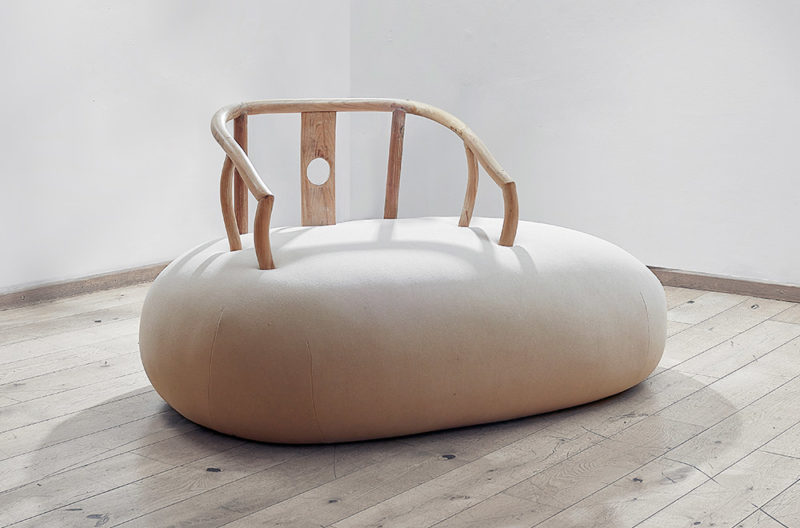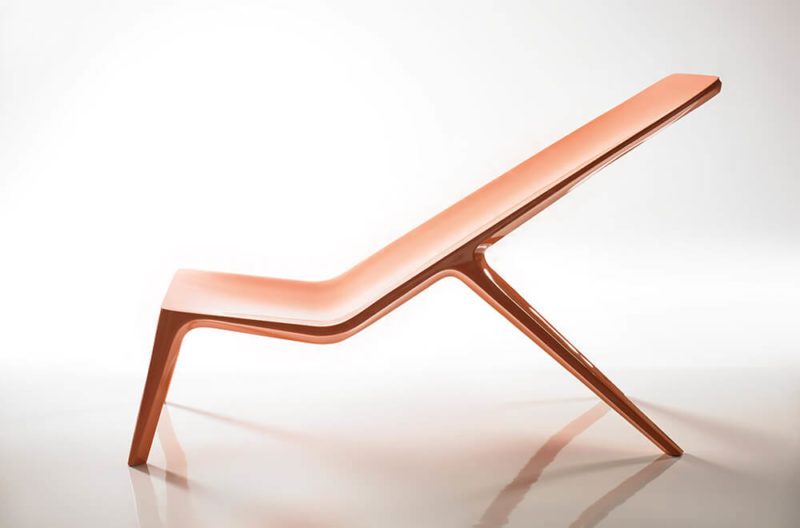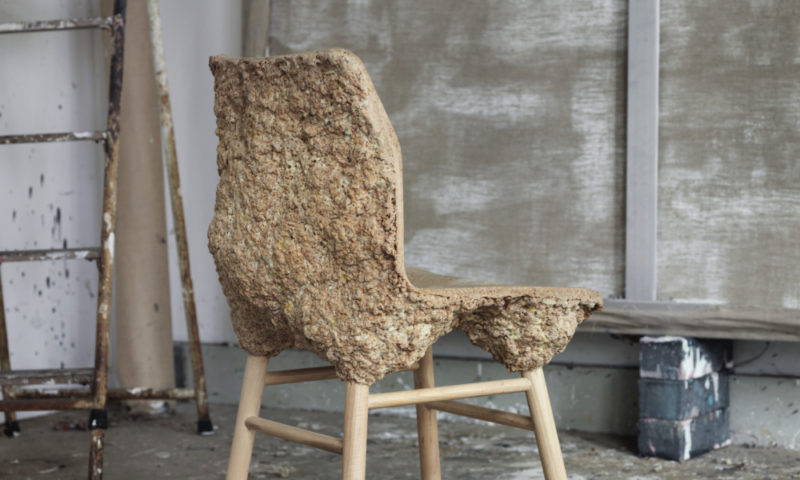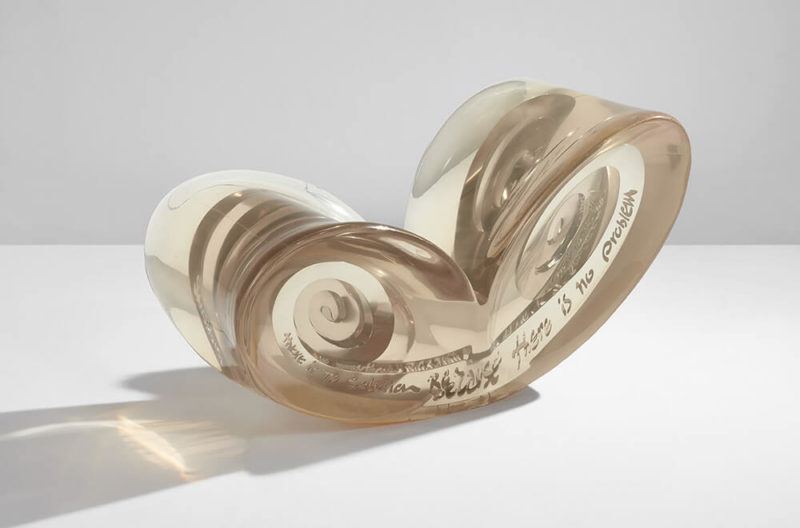Book Review / Re-issue, Re-imagine, Re-make
Imitation or icon? A thorough investigation into the evolution of design.
Elisabeth Darby
Lund Humphries, 2020
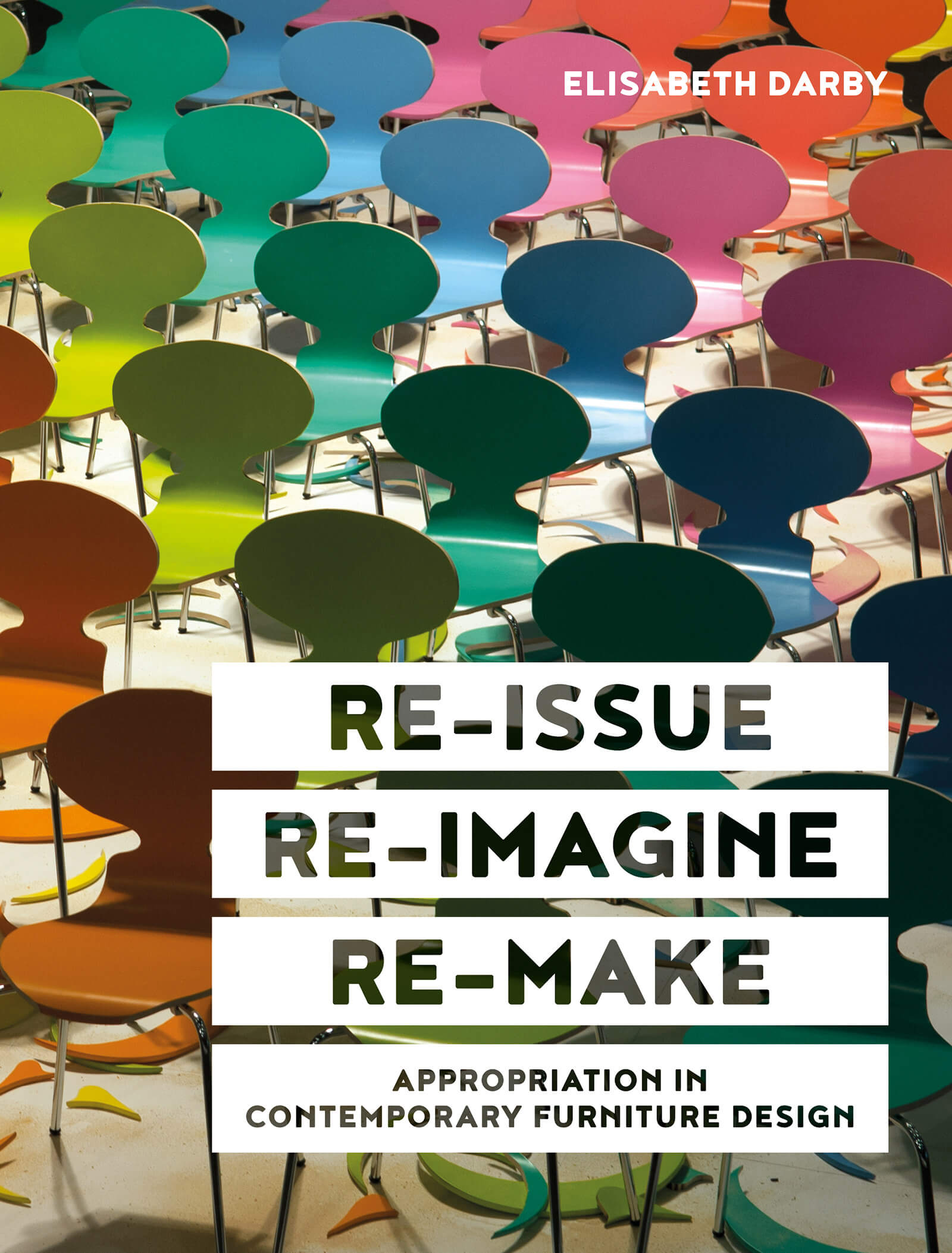
Re-issue, Re-design, Re-make
COURTESY: Lund Humphries
WHAT IS THE difference between a design classic and an icon? How were these very select pieces of furniture produced? And how have following generations of designers, artists and makers re-imagined, appropriated, hacked and, sometimes, copied them? These are a few of the questions asked by Elisabeth Darby in her new book Re-issue Re-imagine Re-make.
There’s much to admire here. Darby has been lecturing at Sotheby’s Institute of Art since 1984 and was programme director of its MA contemporary design course from 2007 to 2016. Initially, she sets out to define what constitutes a design icon before investigating the histories of a series of chairs, including Mies van der Rohe’s ‘Barcelona’, the ‘B3’ (or ‘Wassily’) by Marcel Breuer, Alvar Aalto’s ‘Stool 60’, and Arne Jacobsen’s ‘Series 7’. Subsequently, there are short sections devoted to issues around imitation and authenticity before we really get into the meat of the book: how manufacturers and designers have taken these pieces and refined them, added to them, bastardised them, and, on occasion, burned them. Darby carefully unpicks the reasons for this creative effort, case by case.

Verner Panton for Vitra, ‘Panton Chair Sunlight’, 2017
COURTESY: Lund Humphries
Some have functional explanations. In 2016, for instance, Vitra added around 20mm to the height of the ‘Wire Chair’ by Charles and Ray Eames because, as the company said, it increased the ‘comfort of this classic chair design, especially in combination with contemporary tables’. In other words, we are getting bigger and our furniture has to accommodate that. On other occasions, asking a bunch of famous modern-day designers to play with a renowned piece of furniture is used as a marketing ploy. Manufacturers get PR from both ends – a recognisable object from the past meets a fashionable name from the present – which almost guarantees column inches from design magazines. As Darby points out, for similar reasons, it is also a favourite for charity auctions. “The practice acknowledges the pervasiveness and desirability of certain objects, but also recognises the layering of iconicity and that people are willing to pay more for an icon that has been re-worked by another well-known figure,” she concludes.
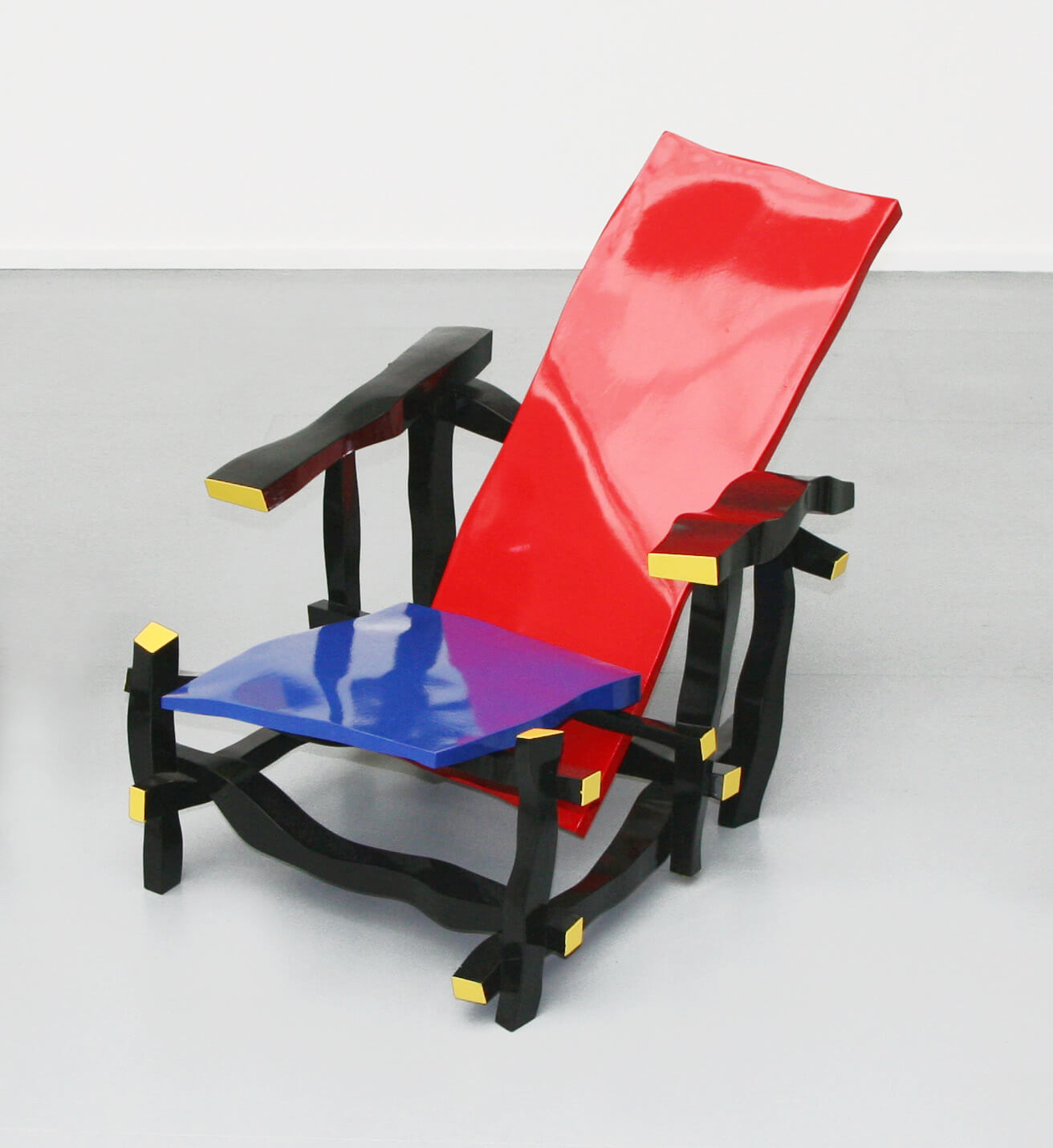
Julien Berthier, ‘The Left-Handed Rietveld Chair’, 2007
COURTESY: Lund Humphries
Sometimes, we discover, designers use the familiarity of a piece of furniture to make a wider point. French artist and designer, Emilie Vorin took a fistful of classics and made them in rattan, bamboo, or a combination of both, in a pair of factories in Beijing. The idea was to highlight copying in China and the country’s reliance on cheap labour to create products for export to western markets. Taking a different tack on the same notion, in another chapter devoted to ‘anonymous’ classics, Darby illustrates how the Dutch designer Maarten Baas made the ubiquitous plastic ‘Monobloc’ chair out of elm, highlighting the extraordinary craftsmanship China also has to offer.
Other times, though there are more emotional reasons for turning to the classics. In 2012, Tuomas Markunpoika partially covered a Thonet chair with steel rings; the chair was then burned leaving only the outline created by the metal. The piece was part of a series that paid tribute to human fragility and his grandmother’s slide into Alzheimer’s disease.
In the final chapter, Darby takes a bit of a U-turn and looks at DIY culture and its relationship to the established design world – concentrating particularly on hacking IKEA. She justifies the divergence by writing that this is where the icons of the future are likely to emerge (and she may well be right).
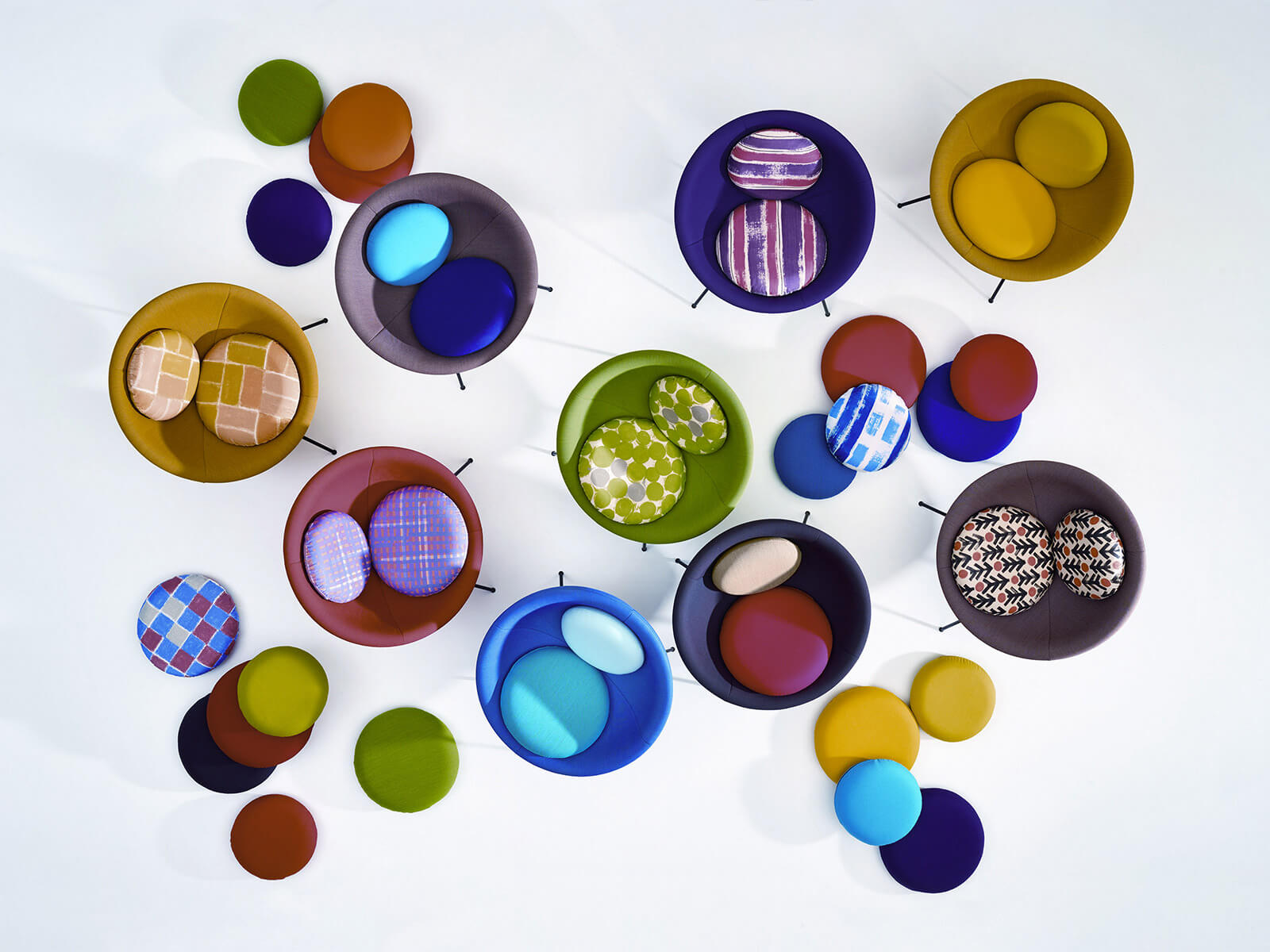
Lina Bo Bardi, ‘Bowl’ chair, 1951 (produced by Arper, 2012)
COURTESY: Lund Humphries
It all sounds quite convincing. There are some fascinating anecdotes in here and stuff I simply didn’t know. So why did I find this book deeply frustrating? Well, it’s mostly about style and format. Re-issue Re-imagine Re-make reads like an academic dissertation. Readers aren’t subtly led through each chapter by smart storytelling, rather we are told formally at the beginning what will happen and what the author is setting out to achieve. It’s all a bit mechanical. The longer the book goes on, the more it resembles a big list. Neither does Darby appear to draw any real conclusions. In her final sentence she quotes TED head, Chris Anderson, observing that we live in a ‘remix’ culture but otherwise she seems happy to point out that these things have happened – rather than investigate why they might have taken place.
All of which is a shame because Darby has been so assiduous in her research. No doubt it will prove an extremely useful reference book, but it feels as though there was another step to take.




